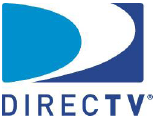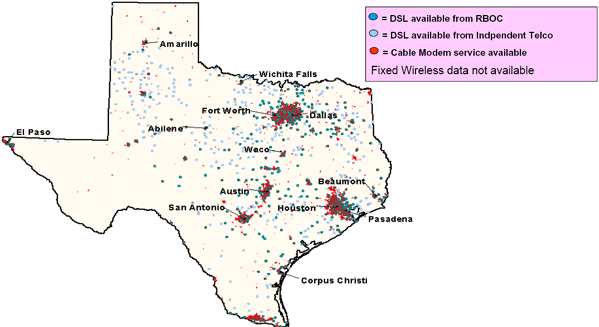WildBlue Communications
The views and opinions expressed in this submission are solely those of the authors and do not represent the views of the Department of Justice.
Slide 1

WildBlue
Communications
2007 Telecommunications Symposium
29 November 2007
David M. Brown
© 2007 WildBlue Communications, Inc
Slide 2
WildBlue Communications
WildBlue is a “Broadband Internet via Satellite” service provider with more than 275,000 customers in the 48 contiguous United States.
- Headquartered in Denver, Colorado
- Privately held corporation
- Entered commercial service June 2005
- Growing rapidly – more than 20,000 new customers a month
- U.S. national infrastructure with
- 2 Ka-band spot beam satellites
- 11 Gateway Earth Stations
- Network Operations Center
- Business Systems Data Center
- Customer Call Center
Slide 3
| Subscriber Terminal
Small low cost subscriber terminal |
| Satellite Connectivity
High power, bent-pipe spot beam satellites |
| Gateway Earth Stations
Unmanned remotely operated Gateway Earth Stations |
| Fiber Connectivity
Leased connectivity 3rd party email, web hosting, portal |
| Operations & Business
Network operations Business systems Denver, Colorado |
Slide 4
Residential Service Offerings
 |
||||||||||||||||||||||||||||||||||||||||||||||||||||||||||||||||
|
||||||||||||||||||||||||||||||||||||||||||||||||||||||||||||||||
Slide 5
Source:WildBlueMarket Research, 2006
Slide 6
Key Drivers of Satellite Broadband Market
Social Trends
- Urban & second home movement to rural areas for “lifestyle”
- Long-term reduction in rural jobs
- Telecommuting
Product Trends
- Decline in upfront price
- Demand for speed & capacity (usage)
Competitive Trends
- Growth of DSL/CM (assumed very low)
- LECs: “we will not serve 20% of our customers with DSL”
- Growth of fixed wireless
- Expansion of nascent technologies (BPL, 3 or 4G, etc.)
Slide 7
| WildBlue Targets the Most Rural Markets
|
Customers WildBlue Customers: Population Density
Nearly 70% of WildBlue |
Slide 9
| Homes by Block Group Household Density (homes per sq.mi.) | % of total | |||||||||
|---|---|---|---|---|---|---|---|---|---|---|
| <50 | 50 to 99 | 100 to 250 | Over 250 | total | <50 | 50 to 99 | 100 to 250 | Over 250 | total | |
| No Terr. Broadband | 211,856 | 24,078 | 1,797 | 2,463 | 240,194 | 59% | 28% | 1% | 0% | 20% |
| Terr. Broadband | 144,410 | 63,299 | 173,469 | 585,280 | 966,458 | 41% | 72% | 99% | 100% | 80% |
| Total | 356,266 | 87,377 | 175,266 | 587,743 | 1,206,652 | 100% | 100% | 100% | 100% | 100% |
Source: Pinkham Group (4/06);WildBlue extrapolation; Prairie I-net
Slide 10
| Homes by Block Group Household Density (homes per sq.mi.) | % of total | |||||||||
|---|---|---|---|---|---|---|---|---|---|---|
| <50 | 50 to 99 | 100 to 250 | Over 250 | total | <50 | 50 to 99 | 100 to 250 | Over 250 | total | |
| No Terr. Broadband | 1,062,050 | 191,222 | 1,361 | - | 1,254,633 | 91% | 52% | 0% | 0% | 15% |
| Terr. Broadband | 103,707 | 175,331 | 657,868 | 5,944,732 | 6,881,638 | 9% | 48% | 100% | 100% | 85% |
| Total | 1,165,757 | 366,553 | 659,229 | 5,944,732 | 8,136,271 | 100% | 100% | 100% | 100% | 100% |
Slide 11
Distribution Partners
- Retail Distribution
- Approximately 1500 dealers
- Wholesale Distribution
- AT&T
- DIRECTV
- EchoStar/DISH
- National Rural Telecommunications Cooperative (NRTC)
- Enterprise Distribution
- Approximately 50 Value-Added Resellers
 |
 |
 |
 |
Slide 12
Broadband Market (by Technology)
Source: Jupiter; ignores BPL subs
Slide 13
Technology Comparison
| 2005 EOY Subscribers | Growth 2005-09 (CAGR) | Pro | Con | |
|---|---|---|---|---|
| Cable Modem/DSL | 44.6 million | 10% | Speed Price Local Presence Bundled offering |
Not ubiquitous |
| Fixed Wireless | 0.2 million | 32% | Price Local Presence |
Not ubiquitous Mostly unlicensed spectrum (except Sprint/Clearwire) Must choose where to build |
| Satellite | 0.3 million | 42% | Ubiquity | CPE Cost Unproven VoIPoffering Time to market for new capacity |
| Broadband Over Power Line (BPL) | <0.1 million | n/a | Price Local Presence Some existing infrastructure |
Cost Not ubiquitous Must choose where to build |
Slide 14
Keys to Success
- Internet access architecture
- Affordable bandwidth, bent-pipe spot beam satellites
- DOCSIS standards
- Low-cost CPE
- Small outdoor unit, easy to install and attractive in a residential environment
- Strong distribution relationships
- Excellent technology and manufacturing partners
 |
 |
 |
 |
 |
 |
 |
Slide 15
WildBlue Vision for Future Technology
- Higher capacity satellites
- Incredibly high capacities are possible, allowing millions of customers per satellite
- Improved latency mitigation
- Better proxy, protocol translation and compression
- Decreased cost of providing the service
- Smaller spot beams, advanced network design allowing lower power terminals at higher data rates
- Higher customer expectations for satellite Internet service will be the challenge
Snappy web surfing “Unlimited”consumption Faster speeds No outages - Next generation WildBlue technology and business processes incorporating lessons learned
Slide 16

WildBlue
Communications

 U.S. Department
of Justice
U.S. Department
of Justice












